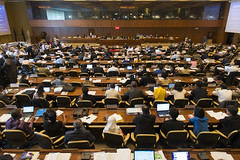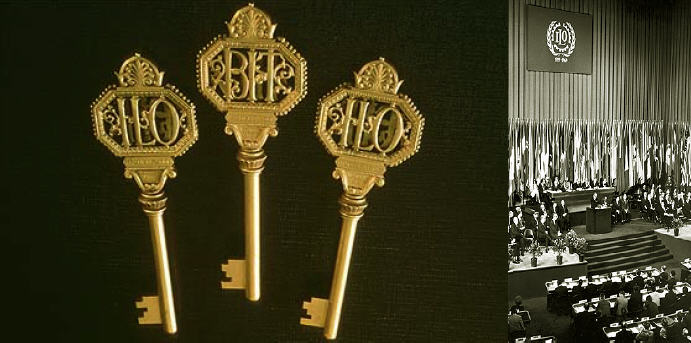ILO is a specialized agency of the United Nations


| Français - Español | |
| |
|
| > Homepage > Online information resources > Resource guides > History of the ILO | |
|
ILO activities in the post-war world (Part 1: 1946-1959)
|
David A. Morse, ILO Director-General (1948-1970)
Launch of the ILO Manpower ProgrammePursuant
to the decisions taken at the 104th (March 1948), 107th
(December 1948) and 108th (March 1949) Sessions of its Governing
Body, ILO started implementing the Manpower Programme. The objective of the
Programme, the most far-reaching ever undertaken by the Organization, was
to conduct activities with a view to helping governments and organizations
of employers and workers to cope rapidly and effectively with immediate
manpower problems. In December 1948, nine months after its launch in
Europe, the Programme was expanded to Latin America and Asia.
Although it was based on ILO’s work of the past, the Programme nevertheless took a new tack. Before the Second World War, ILO manpower action consisted above all in establishing standards, doing research and providing information. From its inception, the Programme endeavoured to give greatly expanded scope to technical advisory missions. It worked along three main lines:
Freedom of Association and the Right to Organize Convention, 1948 (No. 87)“This
fundamental convention sets forth the right for workers and employers to
establish and join organizations of their own choosing without previous
authorization. Workers' and employers' organizations shall organize freely
and not be liable to be dissolved or suspended by administrative authority,
and they shall have the right to establish and join federations and
confederations, which may in turn affiliate with international
organizations of workers and employers” (see Rules of the game: A brief introduction to International Labour Standards, p. 24).
In June 1994, at the 81st Session of the International Labour Conference, a clear consensus emerged among ILO’s constituents to step up promotion of fundamental social rights. The World Summit for Social Development, , held in Copenhagen in March 1995, bolstered ILO’s efforts by inviting the governments to protect and promote “respect for the fundamental rights of workers”. It was in this favourable international context that ILO defined as “fundamental” the conventions dealing with matters considered to be fundamental principles and rights at work. On 25 May 1995, ILO Director-General Michel Hansenne, sent a letter to the Member States with a view to obtaining universal ratification of these fundamental conventions, of which there were seven at the time. The ILO Declaration on Fundamental Principles and Rights at Work (1998), a promotional instrument drawn up specifically to strengthen application of the fundamental legal principles for social justice, gave a substantial boost to the ratification campaign. In 2008, ILO Director-General Juan Somavia, drew attention to the importance of accelerated ratification of the fundamental conventions and proposed the goal of universal ratification by 2015. (See Ratification and promotion of fundamental ILO conventions, p. 1) There are currently eight fundamental conventions:
|
|
| Last update: 23.02.2015 | ^ top |













